9 Seasons of Hell on Earth: Some Thoughts About The Walking Dead, Part One
 |
I chose to finally write about The Walking Dead after nine seasons because of the departure of a major character, which changed the whole dynamic of the series, turning it into a different direction (Season 10 broadcasts Oct 6, 2019). For fans of the show, much of what is in this article is me stating the obvious. I know many people who have stopped watching the show after various seasons, for one reason or another. I also know people who have never watched TWD and never will, and some who have just started watching. There may be some hints and clues about certain things, but there are no real spoilers here. This article is about how the show affects me, personally.
Someone on Facebook commented that they stopped watching simply because the show is so sad, even depressing. True. This is not a comedy. There’s a lot of sorrow and sadness in almost every episode, a veritable trail of tears. Sometimes the grief on an actor’s face is enough to get to me. There are powerful emotions here: both love and hate, as well as fear and horror in the eyes of the characters; there’s also plenty of heart and soul poured into these scenes, which the cast so effectively conveys. As a relative told me when we were discussing the series over the Labor Day weekend, “My heart has been ripped out over and over again by what happens to these characters. I feel their pain, I feel their grief and I mourn with them.” I agree with her. I’ve gotten caught up in the lives and deaths of these characters. So please, bear with me.
Although I’ve read only a handful of Robert Kirkman’s graphic novels, I’ve been a fan of the television series since episode one, and still remain a fan. I’m not a mad puppy because the show’s producers and writers made some changes which aren’t part of Kirkman’s mythos. Certain characters that had been killed in the graphic novels became so popular on the TV show that the producers decided to keep them around. Other popular characters were killed off on the show and, as most writers know, characters and plot twists often demand to be heard and made.
 Yesterday I posted my last full review of a film from the 2019 Fantasia International Film Festival. Today, then, a post looking back at this year’s Fantasia. First, as always, my profound thanks to everyone who puts the festival together. And thanks as well to the audiences, who give the festival a reason for being. Special thanks to everyone I watched movies with, everyone I waited in line with, and everyone who I talked with and hung out with during Fantasia 2019.
Yesterday I posted my last full review of a film from the 2019 Fantasia International Film Festival. Today, then, a post looking back at this year’s Fantasia. First, as always, my profound thanks to everyone who puts the festival together. And thanks as well to the audiences, who give the festival a reason for being. Special thanks to everyone I watched movies with, everyone I waited in line with, and everyone who I talked with and hung out with during Fantasia 2019.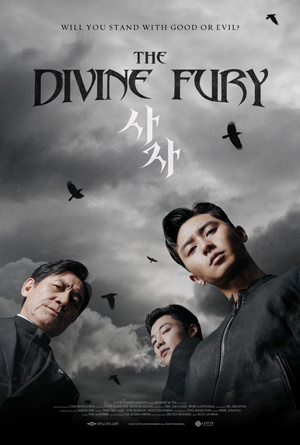 All good things must come to an end, they say, and for me Fantasia 2019 ended at the Hall Theatre with the Korean action-horror movie The Divine Fury (사자, romanised as Saja, literally Emissary). Directed by Kim Joo-hwan, it follows Yong-hu (Park Seo-jun), a champion MMA fighter who lost his father under mysterious circumstances at a young age. In the present, when mysterious wounds appear on his hands and he is attacked by a demonic force, a blind shaman guides him to exorcist Father Ahn (Ahn Sung-ki), who tells him the wounds are stigmata and give him great power in fighting demons. The two team up, reluctantly on the part of Yong-hu, who holds a grudge against Christianity after the death of his father. But there are dark forces at work in Seoul, and Yong-hu must use all his skills to defeat the forces of hell on earth.
All good things must come to an end, they say, and for me Fantasia 2019 ended at the Hall Theatre with the Korean action-horror movie The Divine Fury (사자, romanised as Saja, literally Emissary). Directed by Kim Joo-hwan, it follows Yong-hu (Park Seo-jun), a champion MMA fighter who lost his father under mysterious circumstances at a young age. In the present, when mysterious wounds appear on his hands and he is attacked by a demonic force, a blind shaman guides him to exorcist Father Ahn (Ahn Sung-ki), who tells him the wounds are stigmata and give him great power in fighting demons. The two team up, reluctantly on the part of Yong-hu, who holds a grudge against Christianity after the death of his father. But there are dark forces at work in Seoul, and Yong-hu must use all his skills to defeat the forces of hell on earth.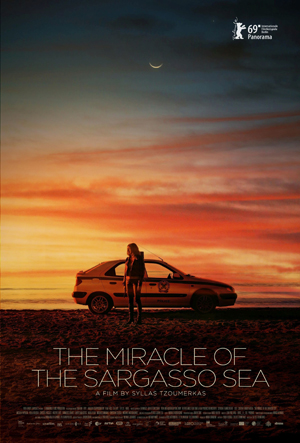 The nice thing about my last day of Fantasia was that rather than sit in one place, I would watch something on my own in the screening room, then something at the small De Sève Cinema, and finally something at the big Hall Theatre. It had the well-rounded feeling of a good summing-up.
The nice thing about my last day of Fantasia was that rather than sit in one place, I would watch something on my own in the screening room, then something at the small De Sève Cinema, and finally something at the big Hall Theatre. It had the well-rounded feeling of a good summing-up. After taking a day to attend to various non-cinema matters, I came early to the last day of the Fantasia Film Festival. I had two movies I wanted to see in theatres, but first I wanted to catch up on something I’d missed when played on the big screen: the 2019 International Science Fiction Short Film Showcase. Luckily, I was able to watch it at the Fantasia screening room. Uncharacteristically, American shorts dominated this year; in an appropriately science-fictional statistic, 7 of 9 movies were from the US, with one from Australia that ended the showcase (at least in the order described in the Fantasia program) and one from Ukraine that began it.
After taking a day to attend to various non-cinema matters, I came early to the last day of the Fantasia Film Festival. I had two movies I wanted to see in theatres, but first I wanted to catch up on something I’d missed when played on the big screen: the 2019 International Science Fiction Short Film Showcase. Luckily, I was able to watch it at the Fantasia screening room. Uncharacteristically, American shorts dominated this year; in an appropriately science-fictional statistic, 7 of 9 movies were from the US, with one from Australia that ended the showcase (at least in the order described in the Fantasia program) and one from Ukraine that began it. I approached my second and last film of July 30 with real uncertainty. I’d never seen many tokusatsu films or TV shows, and what I had seen I hadn’t cared for. (‘Tokusatsu’ literally means something like ‘special effects,’ but in the West it’s come especially to refer to shows like Power Rangers or Kamen Rider.) Still, playing in the De Sève Cinema was Garo — Under the Moonbow (Garo: gekkô no tabibito, 牙狼 — 月虹ノ旅人, also translated Garo: Moonbow Traveler), written and directed by Keita Amemiya. It’s the latest installment of a franchise, created by Amemiya, which began with a 2005 TV series and has continued through more TV shows, live-action movies, and anime series. as well as video games, manga, and various other tie-ins. A veteran creator of tokusatsu dramas, Amemiya is particularly known for his powerful design sense, and the images and description of the film promised a stylish fantasy adventure. Although it’d be my first experience with a series that had dozens of hours of continuity behind it, I decided it was worth passing up a chance to see The Crow on the big screen in order to watch Under the Moonbow.
I approached my second and last film of July 30 with real uncertainty. I’d never seen many tokusatsu films or TV shows, and what I had seen I hadn’t cared for. (‘Tokusatsu’ literally means something like ‘special effects,’ but in the West it’s come especially to refer to shows like Power Rangers or Kamen Rider.) Still, playing in the De Sève Cinema was Garo — Under the Moonbow (Garo: gekkô no tabibito, 牙狼 — 月虹ノ旅人, also translated Garo: Moonbow Traveler), written and directed by Keita Amemiya. It’s the latest installment of a franchise, created by Amemiya, which began with a 2005 TV series and has continued through more TV shows, live-action movies, and anime series. as well as video games, manga, and various other tie-ins. A veteran creator of tokusatsu dramas, Amemiya is particularly known for his powerful design sense, and the images and description of the film promised a stylish fantasy adventure. Although it’d be my first experience with a series that had dozens of hours of continuity behind it, I decided it was worth passing up a chance to see The Crow on the big screen in order to watch Under the Moonbow.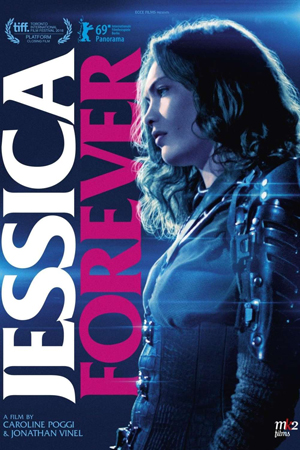 My first movie on July 30 was the first feature by two French directors of independent short films, Caroline Poggi and Jonathan Vinel. Jessica Forever, which the duo wrote as well as directed, is set in a near future in which disaffected and violent youth, mostly male, roam empty suburbs. The law hunts them down with killer drones, and the movie opens with a cloud of drones after one man, Kevin (Eddy Suiveng), who has squatted in an empty house. He’s saved from the law by a mysterious woman named Jessica (Aomi Muyock) and her squad of young men, who welcome Kevin into the fold.
My first movie on July 30 was the first feature by two French directors of independent short films, Caroline Poggi and Jonathan Vinel. Jessica Forever, which the duo wrote as well as directed, is set in a near future in which disaffected and violent youth, mostly male, roam empty suburbs. The law hunts them down with killer drones, and the movie opens with a cloud of drones after one man, Kevin (Eddy Suiveng), who has squatted in an empty house. He’s saved from the law by a mysterious woman named Jessica (Aomi Muyock) and her squad of young men, who welcome Kevin into the fold. The last of the four movies I had on my schedule for July 29 promised to be interesting on any number of levels. Son of the White Mare (Fehérlófia) is an animated film made in 1981 by Hungarian Marcell Jankovics, directed by him from a script he wrote with László György. It’s based on the work of poet László Arany and folktales of the Magyars and Avars; Jankovics, who has published 15 books on comparative mythology, picked and chose from among the various versions of the tale to create what he wanted — a weird, protean, eye-popping, archetypal light show.
The last of the four movies I had on my schedule for July 29 promised to be interesting on any number of levels. Son of the White Mare (Fehérlófia) is an animated film made in 1981 by Hungarian Marcell Jankovics, directed by him from a script he wrote with László György. It’s based on the work of poet László Arany and folktales of the Magyars and Avars; Jankovics, who has published 15 books on comparative mythology, picked and chose from among the various versions of the tale to create what he wanted — a weird, protean, eye-popping, archetypal light show.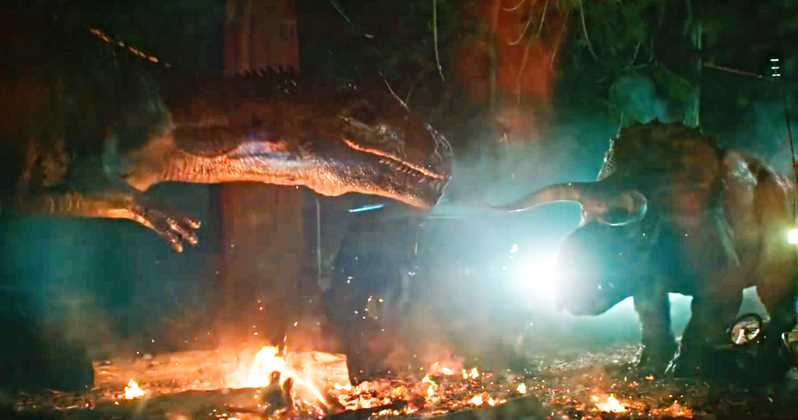
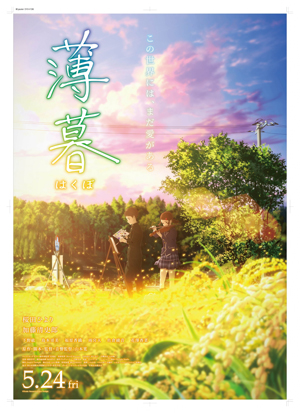 My third screening on July 29 was a double-feature at the De Sève Cinema of two animated movies, a long short and a short feature. “A Japanese Boy Who Draws” (ある日本の絵描き少年) is 20 minutes long. Twilight, which I immediately came to think of as (Not That) Twilight (and in fact some places online translate the title 薄暮, Hakubo, as Project Twilight), is 53 minutes long. They’re both slice-of-life films about young people in Japan making art, but are otherwise very different narratively and visually. Which is to say they have enough in common and enough contrast to make a fine double bill.
My third screening on July 29 was a double-feature at the De Sève Cinema of two animated movies, a long short and a short feature. “A Japanese Boy Who Draws” (ある日本の絵描き少年) is 20 minutes long. Twilight, which I immediately came to think of as (Not That) Twilight (and in fact some places online translate the title 薄暮, Hakubo, as Project Twilight), is 53 minutes long. They’re both slice-of-life films about young people in Japan making art, but are otherwise very different narratively and visually. Which is to say they have enough in common and enough contrast to make a fine double bill.